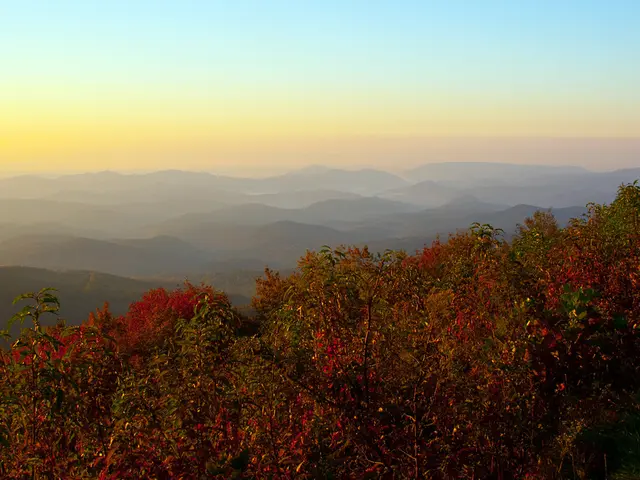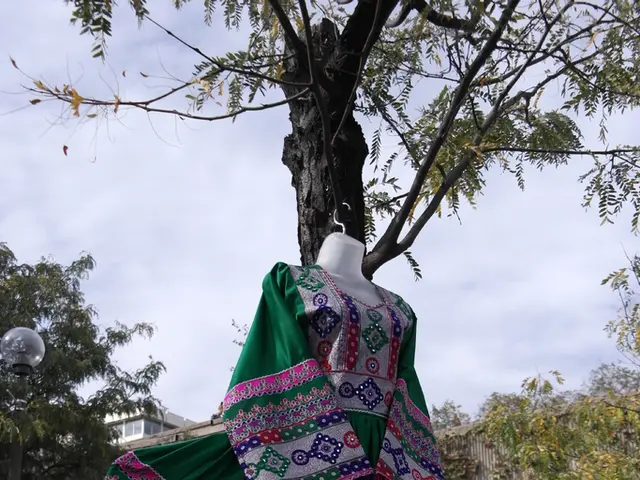Enigmatic Stone Circles of Węsiory: A Polish Counterpart to Stonehenge
Hey there! Let's dive into the less-known but captivating archaeological wonder of Węsiory, Poland, often referred to as the "Polish Stonehenge." This enigmatic site is home to a series of stone circles and burial mounds, leaving both tourists and scientists bewitched by its historical and mystical allure.
The stone circles here might not rival the grandeur of their Celtic counterparts in England, but they still present an impressive sight. The site comprises 20 stone structures, with the largest circle spanning a whopping 16 meters in diameter. Archaeologists have discovered over a hundred cremation and skeletal graves, many holding well-preserved ornaments and jewelry, pointing towards the site’s significance in ancient times.
These stone monuments were formed from rectangular steles reaching up to one and a half meters in height. The most prominent circle stretches 26 meters in circumference, while three out of the four main circles still remain in relatively good condition. The fourth, however, has experienced partial destruction.
The origins and purpose of these stone circles have sparked debates among scholars. Initially, some held the belief they served as grave markers. But Professor Ryszard Wołągiewicz, an expert on the Wielbark culture, proposed an alternative theory. After analyzing the site, Scandinavian folklore, and historical accounts, Wołągiewicz suggested that these circles were gathering places for tribal elders. These elders would make decisions affecting their community’s future and hold judicial proceedings within these circles, possibly seeking guidance from their deceased ancestors.
The stone circles are thought to date back to the migration period of the Goths, who traveled south from present-day Scandinavia and the Baltic islands of Öland and Gotland around the turn of the era. The Goths settled in the Pomeranian region for approximately 250 years, establishing villages, farming, herding animals, and engaging in craftsmanship. This period saw the development of the Wielbark culture, known for its distinct burial practices.
Beyond their historical context, the stone circles of Węsiory have become a hub for modern mysticism and paranormal theories. Some visitors claim to experience a tingling sensation when entering the circles, attributing it to the site’s supposed healing energy. Others believe that the circles emit mysterious energy that can restore balance to energy fields within the body, providing therapeutic effects.
There are also theories that these stone circles may have served as ancient astronomical observatories, determining the timing of agricultural activities such as sowing and harvesting. However, the exact origin of the stone circles remains debatable. Some argue that they might predate the Gothic settlement and were already present when the Goths arrived.
One local legend attributes the construction of the stone circles to the mythical Stolemowie, ancient giants said to have inhabited the region. This tale, coupled with other accounts of mysterious discoveries, such as reports of giant skeletons found in the 1950s, fuels speculation about the site's origins.
Ireneusz Korda from the Sulęczyno Community Cultural Center, which oversees the Węsiory site, expresses hopes for the establishment of a local museum dedicated to the Goths and their cultural heritage, making Węsiory a must-visit destination for those seeking a touch of history, mystique, and cultural charm.
- The stone circles of Weśiory, often compared to Stonehenge, are captivating tourist attractions and a rich source of historical intrigue for researchers.
- The enigmatic stone structures in Weśiory, dating back to the Gothic migration period, provide insight into the lifestyle and cultural practices of the ancient Goths, including their distinct burial customs.
- Some scholars propose that these stone circles might have served as gathering places for tribal elders, while others speculate they could have been used for astronomy or even as energy centers, based on claims of healing effects and mystical experiences.
- The stone circles of Weśiory, standing proud in Poland, offer more than just historical value; they embody a unique blend of education, culture, and travel experiences, humorously bridging the gap between the past and present.
- As a traveler, stepping into these ancient circles at Weśiory feels like stepping back into a time machine, offering an immersive glimpse into the energy, customs, and beliefs of the peoples who once inhabited the region.
- The Weśiory site, teeming with stone circles and mysteries, calls out to researchers and adventurers alike seeking knowledge of the past or the thrill of uncovering buried secrets.
- As the construction of a local museum dedicated to the Gothic culture and the Weśiory site nears, the region's timeless charm and vibrant energy become increasingly available for all to explore and appreciate.








